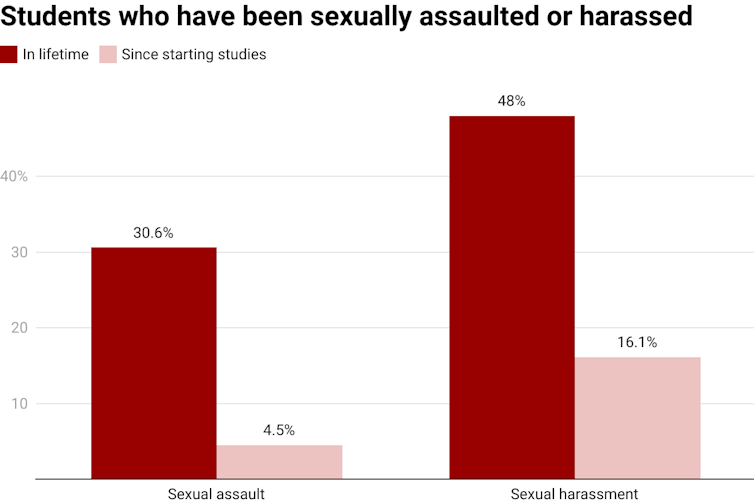1 in 3 uni students have been sexually assaulted in their lifetime. They demand action on their vision of a safer society
- Written by Anastasia Powell, Associate Professor, Criminology and Justice Studies, RMIT University

One in three university students (30.6%) have experienced sexual assault at least once in their lifetime. This is one finding from the 2021 National Student Safety Survey (NSSS) report, released today.
The survey responses from 43,819 students enrolled in 38 Australian universities, as well as written responses from 1,835 current and former students, demonstrate the extent and impacts of sexual violence in and beyond the higher education sector.
The survey also found one in 20 (4.5%) had been sexually assaulted in a university context since starting their studies. In the 12 months preceding the survey, 1.4% of women and 0.6% of men reported experiencing sexual assault in a university context.





